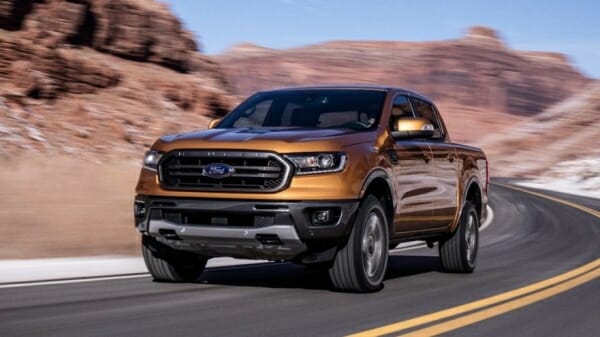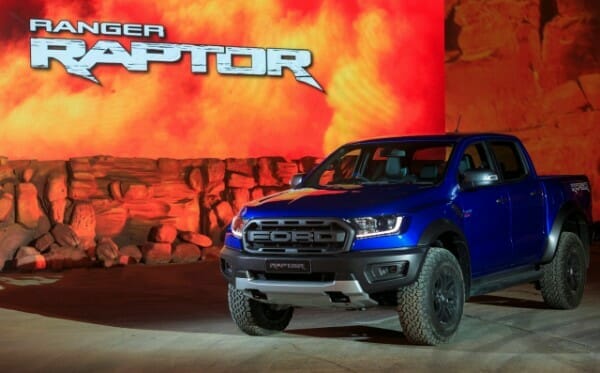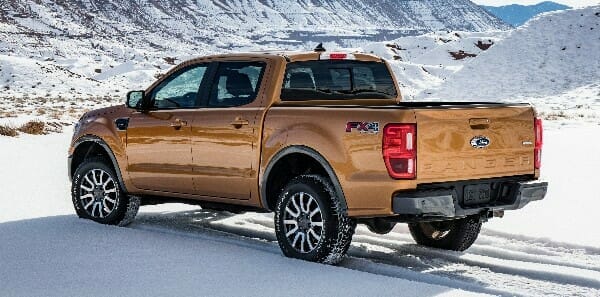Now that the hype behind the 2019 Ford Ranger is in the market, people are quickly realizing that it’s a pretty amazing little truck. This causes you to wonder about the Ford Ranger history – where it came from, whatever happened to it and how we got back to it.
We’ve put together a complete rundown of the Ford Ranger model years, but the history starts where you least expect it.
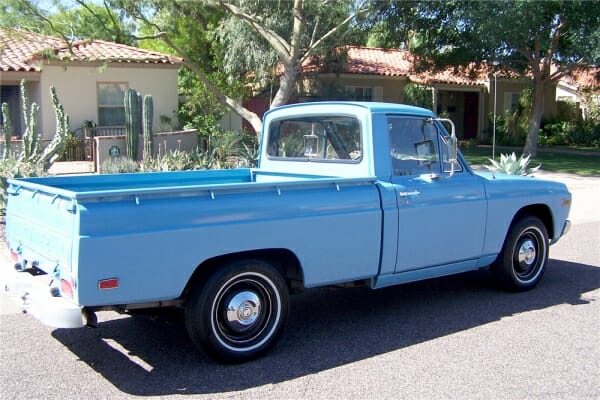
Ford Ranger History – In the Beginning
Let’s take a look back at the Ranger compact pickup. This brings us to Mazda.
During the early 1970s, smaller trucks started to be a thing. Popularity grew as Toyota and Datsun both produced a small pickup. The American manufacturers wanted in on the action, but developing their own truck would cost money and precious time.
Since the Japanese already had success in making efficient and reliable pickups, Ford decided to work out a partnership with Mazda. That’s when the B-Series pickup came to be, otherwise known as the Ford Courier. Ford sold this from 1972 through 1982.
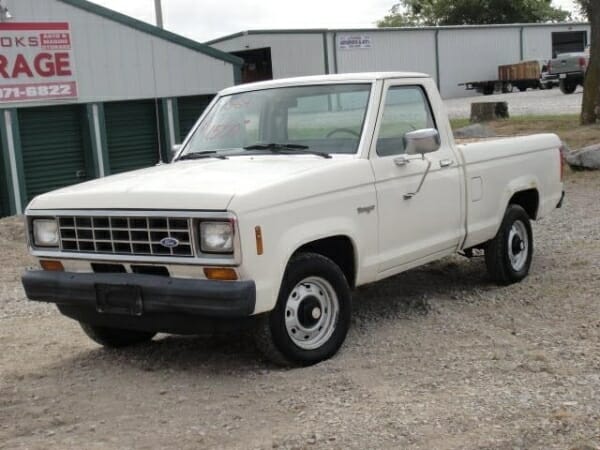
Ford Ranger History – Gas Crisis
Shortly after the Courier came to America, war broke out in the Middle East. OPEC didn’t want anyone supporting Israel so they placed an embargo on those countries. Gas prices went through the roof and lines were long. The gas stations began running out of fuel and people didn’t want gas-guzzling trucks anymore. Instead they looked for vehicle with better fuel economy.
To fight back, Ford decided to launch Project Yuma. This project developed the Ranger pickup truck which replaced the Courier. While the program began in 1973, it didn’t get rolling until closer to 1976.
To counteract some of the cost of imported materials, Ford used lightweight magnesium for the truck’s clutch housing, clutch support and brake brackets. It dropped the weight of the truck by 20 percent. Of course, the aerodynamics received plenty of attention. Then, they improved the engines to make them more fuel-efficient. Customers had access to a 2.0 or 2.3-liter inline-four plus an automatic transmission.
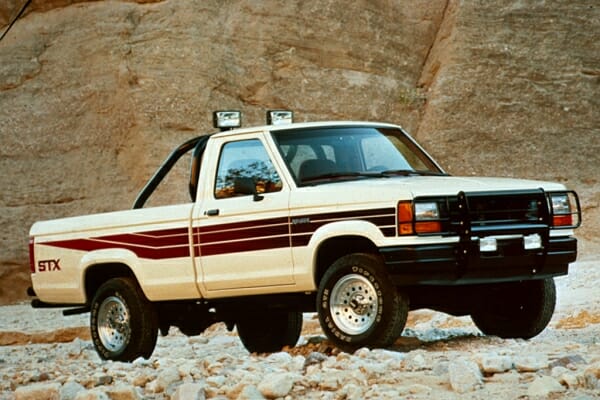
Ford Ranger History – Early Trucks
These trucks featured four-wheel drive as an option and they could carry up to 1,600 pounds of payload. The trouble was, even with the 80 horsepower and 116 lb-ft of torque in the 2.3, it was still slow. That’s when Ford added an optional V6 or a Mazda-built diesel option. It was also when the Bronco II SUV came into play.
Toward the end of the 1970s, production took a nose dive and prices went through the roof with oil once again. Ford received an incredible hit and sales suffered. But that didn’t stop the Ranger from surviving. In fact, the first-generation Ranger went on through 1992. Seven million Rangers made it to production since 1982.
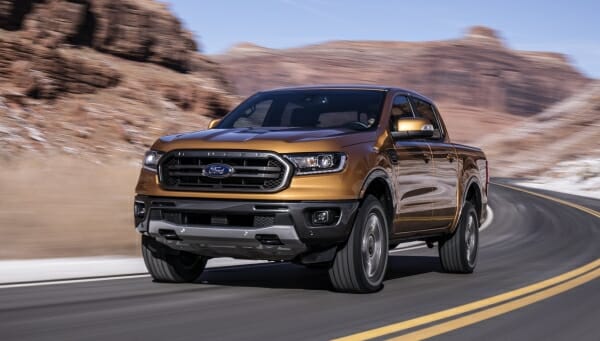
History of the Ford Ranger – The End & New Beginning
Since the 1998 redesign of the Ranger, sales continued to go downhill. There were some minor tweaks, but overall it remained the same truck. Full-size trucks became more popular and quickly took over the segment. Ford also realized that they make more money putting a buyer into a low-end F-150 than selling the compact truck, so they ditched it altogether.
The B-Series truck continued to live on in other parts of the world. The trucks grew in popularity in areas such as Australia, New Zealand, South Africa and Asia. During the years, Ford continued to learn and grow. They worked closely with Ford of Australia to determine what went wrong and how to improve on it.
What we are left with now is the 2019 Ford Ranger which is attempting to compete with the Toyota Tacoma. While it only has a 2.3-liter EcoBoost turbo four-cylinder right now, it does feature the best-in-class towing ability. Overall, enthusiasts are happy to have the Ranger back in production and we will have to wait to see how this story ends.
